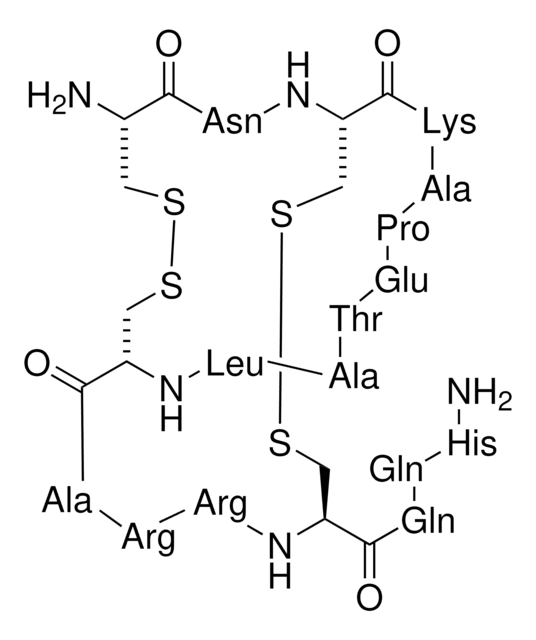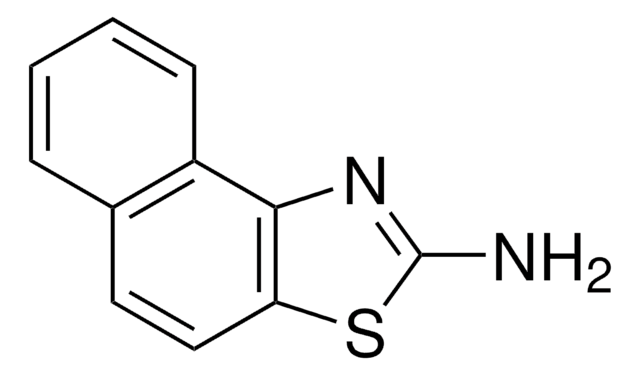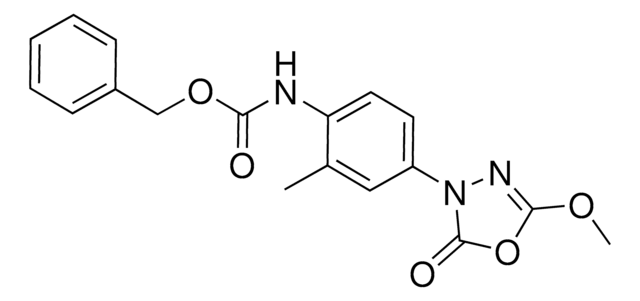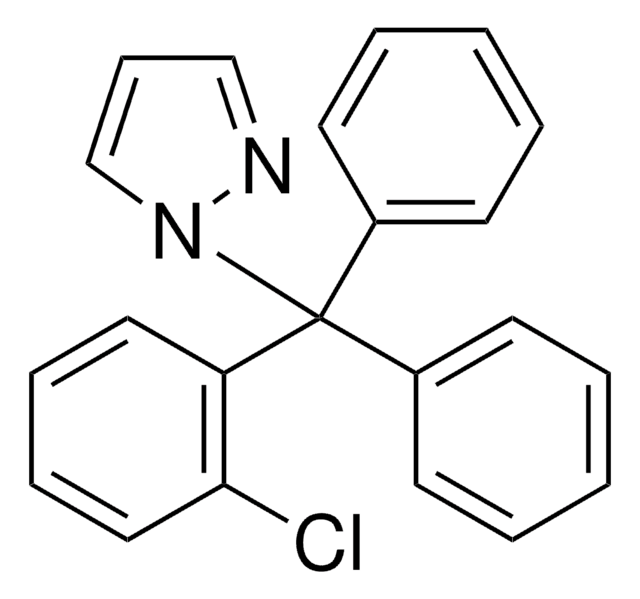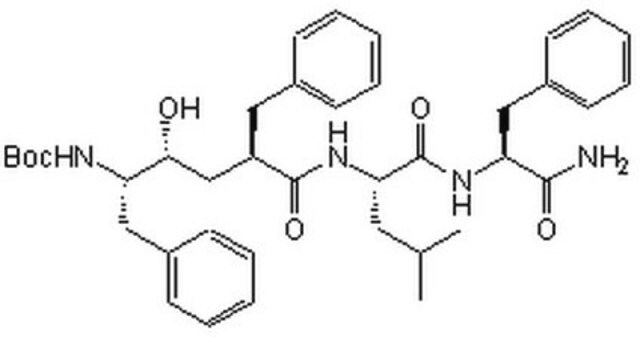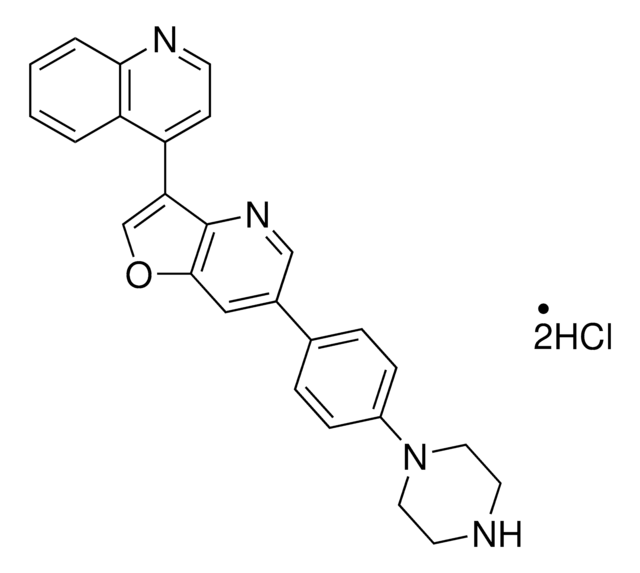SML2206
SKA-121
≥98% (HPLC)
Synonim(y):
5-Methylnaphth[2,1-d]oxazol-2-amine, 5-Methylnaphtho[2,1-d]oxazol-2-amine, SKA 121, SKA121
Zaloguj sięWyświetlanie cen organizacyjnych i kontraktowych
About This Item
Wzór empiryczny (zapis Hilla):
C12H10N2O
Numer CAS:
Masa cząsteczkowa:
198.22
Kod UNSPSC:
12352200
NACRES:
NA.77
Polecane produkty
Próba
≥98% (HPLC)
Postać
powder
kolor
brown to dark gray
rozpuszczalność
DMSO: 2 mg/mL, clear
temp. przechowywania
2-8°C
ciąg SMILES
CC(C1=C2C=CC=C1)=CC3=C2OC(N)=N3
Działania biochem./fizjol.
SKA-121 is a KCa3.1 (IKCa1, IK1, KCa4, SKCa4, SK4) subtype-selective small conductance Ca2+-activated K+ channel (SK channel) positive-gating modulator (EC50 = 109 nM/KCa3.1 vs. 8.7 μM/KCa2.1, 6.8 μM/KCa2.2, 4.4 μM/KCa2.3) with 200- to 400-fold selectivity over CaV1.2 as well as representative KVs (KV1.3, KV2.1, KV3.1, and KV11.1) and NaV (NaV1.2, NaV1.4, NaV1.5, and NaV1.7) channels. When applied in vivo, SKA-121 significantly lowers mean arterial blood pressure in wild-type, but not KCa3.1(-/-), normotensive and hypertensive mice (100 mg/kg i.p.). SKA-121 is a more potent and selective KCa3.1 activator than SKA-31 (EC50 = 260 nM/KCa3.1, 2.9 μM/KCa2.1, 1.9 μM/KCa2.2, 2.9 μM/KCa2.3).
This page may contain text that has been machine translated.
Kod klasy składowania
11 - Combustible Solids
Klasa zagrożenia wodnego (WGK)
WGK 3
Temperatura zapłonu (°F)
Not applicable
Temperatura zapłonu (°C)
Not applicable
Certyfikaty analizy (CoA)
Poszukaj Certyfikaty analizy (CoA), wpisując numer partii/serii produktów. Numery serii i partii można znaleźć na etykiecie produktu po słowach „seria” lub „partia”.
Masz już ten produkt?
Dokumenty związane z niedawno zakupionymi produktami zostały zamieszczone w Bibliotece dokumentów.
Palle Christophersen et al.
Channels (Austin, Tex.), 9(6), 336-343 (2015-07-29)
This short review discusses pharmacological modulation of the opening/closing properties (gating) of small- and intermediate-conductance Ca(2+)-activated K(+) channels (KCa2 and KCa3.1) with special focus on mechanisms-of-action, selectivity, binding sites, and therapeutic potentials. Despite KCa channel gating-modulation being a relatively novel
Aida Oliván-Viguera et al.
Frontiers in physiology, 8, 39-39 (2017-02-16)
The calcium/calmodulin-gated KCa3.1 channel regulates normal and abnormal mitogenesis by controlling K
Aida Oliván-Viguera et al.
Basic & clinical pharmacology & toxicology, 119(2), 184-192 (2016-01-29)
Opening of intermediate-conductance calcium-activated potassium channels (KC a 3.1) produces membrane hyperpolarization in the vascular endothelium. Here, we studied the ability of two new KC a 3.1-selective positive-gating modulators, SKA-111 and SKA-121, to (1) evoke porcine endothelial cell KC a
Brandon M Brown et al.
Molecular pharmacology, 92(4), 469-480 (2017-08-02)
Intermediate-conductance (K
Nichole Coleman et al.
Molecular pharmacology, 86(3), 342-357 (2014-06-25)
Small-conductance (KCa2) and intermediate-conductance (KCa3.1) calcium-activated K(+) channels are voltage-independent and share a common calcium/calmodulin-mediated gating mechanism. Existing positive gating modulators like EBIO, NS309, or SKA-31 activate both KCa2 and KCa3.1 channels with similar potency or, as in the case
Nasz zespół naukowców ma doświadczenie we wszystkich obszarach badań, w tym w naukach przyrodniczych, materiałoznawstwie, syntezie chemicznej, chromatografii, analityce i wielu innych dziedzinach.
Skontaktuj się z zespołem ds. pomocy technicznej